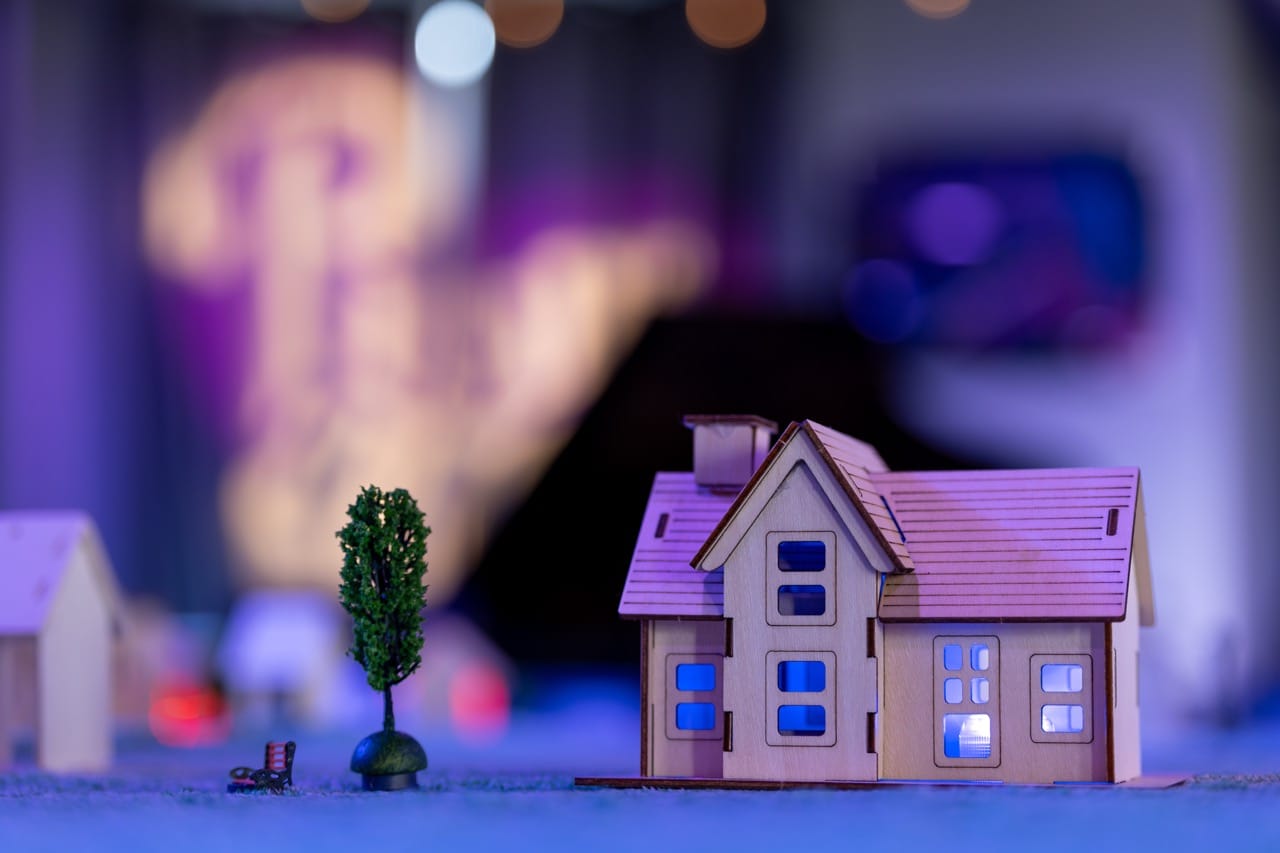
One of the best pieces of theatre I’ve ever seen was a piece based on the Irish myth of Balor of the Evil Eye — a fable-like rendering of the story by Galway’s famed Macnas theatre troupe. The production fused that company’s skill at creating street spectacle using puppetry and dance to create a vibrant world within the confines of a traditional theatre space. Balor wasn’t immersive, but it would whet my appetite for theatre which both mixed media and disregarded the sanctity of the fourth wall.
Those later two traits are in the DNA of Rogue Artists Ensemble, who call their brand of work fusing puppetry, technology, and the full range of the theatrical palette “Hyper-theater.” For some years now the company, under the guidance of Artistic Director Sean T. Cawelti, have been working on Kaiden Project: Walls Grow Thin. This production aims to take all of the Rogues’ skills and place them in the immersive context. In this case: two floors of a storage facility in mid-city, which they have transformed into a labyrinthine netherworld straight out of Japanese myth.
The basic story goes something like this: an old friend, Kana, has gone missing in her family’s storage facility. It’s been weeks now, and we’ve been invited to help with the search inside the building, because there are those who believe that she’s still here… and the strange phenomenon within are doing nothing to dissuade that notion.
From a technical standpoint Walls Grow Thin is one of the most ambitious immersive projects Los Angeles has seen yet. Puppetry and projections merge at points with inventive set design to bring various pieces of Japanese folklore to life. Even with a few hiccups and hitches on opening night — like an errant door that blocked a sightline during a critical early moment — the design skills of the company were on full display. They show that the Rogues have the chops for building out a compelling playhouse within which to stage work.
The storytelling, on the other hand, feels like it could use some tightening.
To be sure: there are some wonderful sequences throughout Walls Grow Thin. The advantage of stitching together a collection of folktales into one evening is that each one gives the company the opportunity to build a world just for each story. Tales of vengeful spirits finding justice are brought to life with stunning ingenuity and wicked wit. Yet it’s the connective tissue — the story of Kana — that doesn’t entirely hold together.
Get Noah J Nelson’s stories in your inbox
Join Medium for free to get updates from this writer.
SubscribeSubscribe
Perhaps the biggest problem is the “scene zero” which takes place in the lobby of “Mori Storage,” the fictional storage company that the very real storage building has been turned into. Here three broad comic characters introduce us to the fundamental dilemma. Or I should say that they reintroduce us to the concept as it was pitched in the email with the arrival instructions.
Heightened theatricality is part of the Rogue’s signature style, but while it works in the supernatural realms that await the audience, here in the threshold between the mundane and the one beyond it’s jarring. It is jarring and strangely out of tone with what immediately follows, a masterfully designed room which establishes the world of the play with some simple interactions.
At times Walls Grown Thin feels like an uneven album from a really great band. For every two “hits” there’s a track that leaves you wondering how it’s supposed to fit into the whole. At one point the audience is brought to a series of rooms that have distinct interactions within them, but its unclear how or if they fit together and just how long we have to explore them. That said, there’s a really great audio story in one of the rooms, which made for arguably my favorite experience of the evening.
Of late I’ve been thinking of immersive theatre as having four pillars: production value, performance, story, and interactive design. Nail any one of those and you have a piece worth writing about. Hit two and you have a good show; three: a great one. A show with all four pillars is a classic. Walls Grow Thin aces the production value without really breaking a sweat, and in moments each of the other four pillars is present.
Which means it might have been less frustrating if Walls Grown Thin was merely ill-conceived. Instead we have a show that with a few solid whacks could go toe-to-toe with the best of the best, but isn’t quite working as a whole. I sure as hell don’t want to see the Rogues give up the form. If they can bring the same attention to detail to narrative design that they do to physical design the company could catapult itself into the international immersive discussion.
As things stand now, they’ve got a show that will satisfy the seasonal need for spooky spectacle without hitting the full horror stride. One that hints at a greater destiny to come.
Kaiden Project: Walls Grow Thin runs through November 5th at an undisclosed location in Mid-City Los Angeles. Matinées are wheelchair accessible. Tickets are $65–75.
No Proscenium is a labor of love made possible by our generous backers like you: join them on Patreon today!
In addition to the No Proscenium web site, our podcast, and our newsletters, you can find NoPro on Twitter, Facebook, YouTube, Instagram, and in our online community Everything Immersive















Discussion